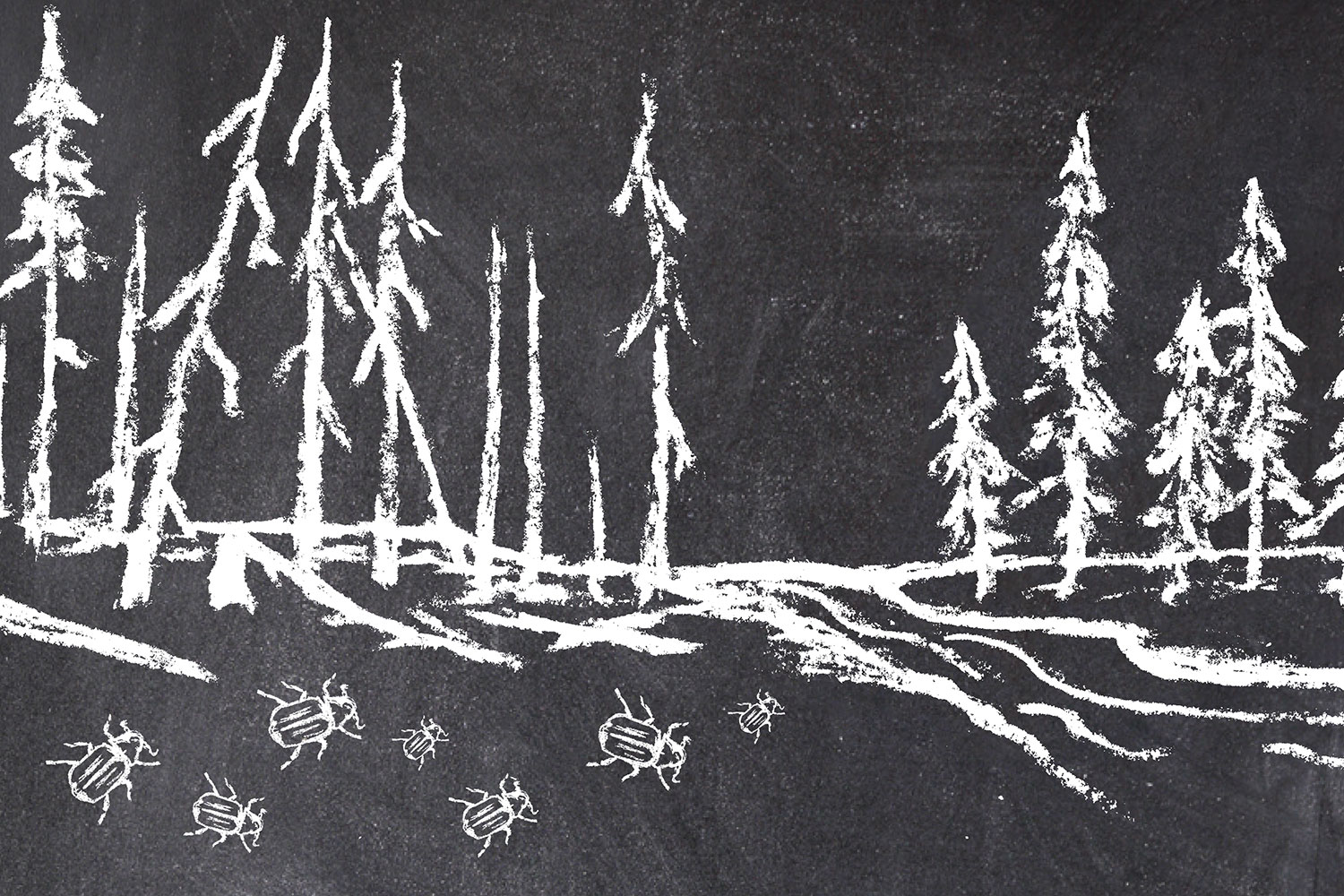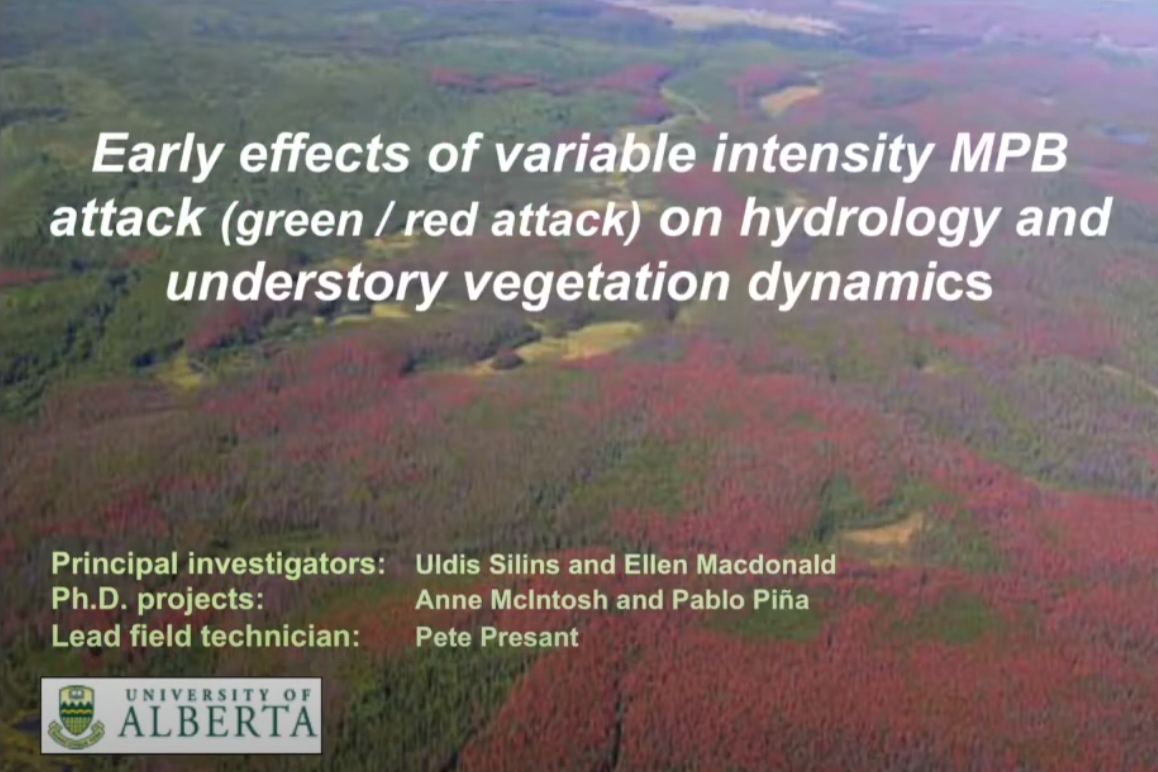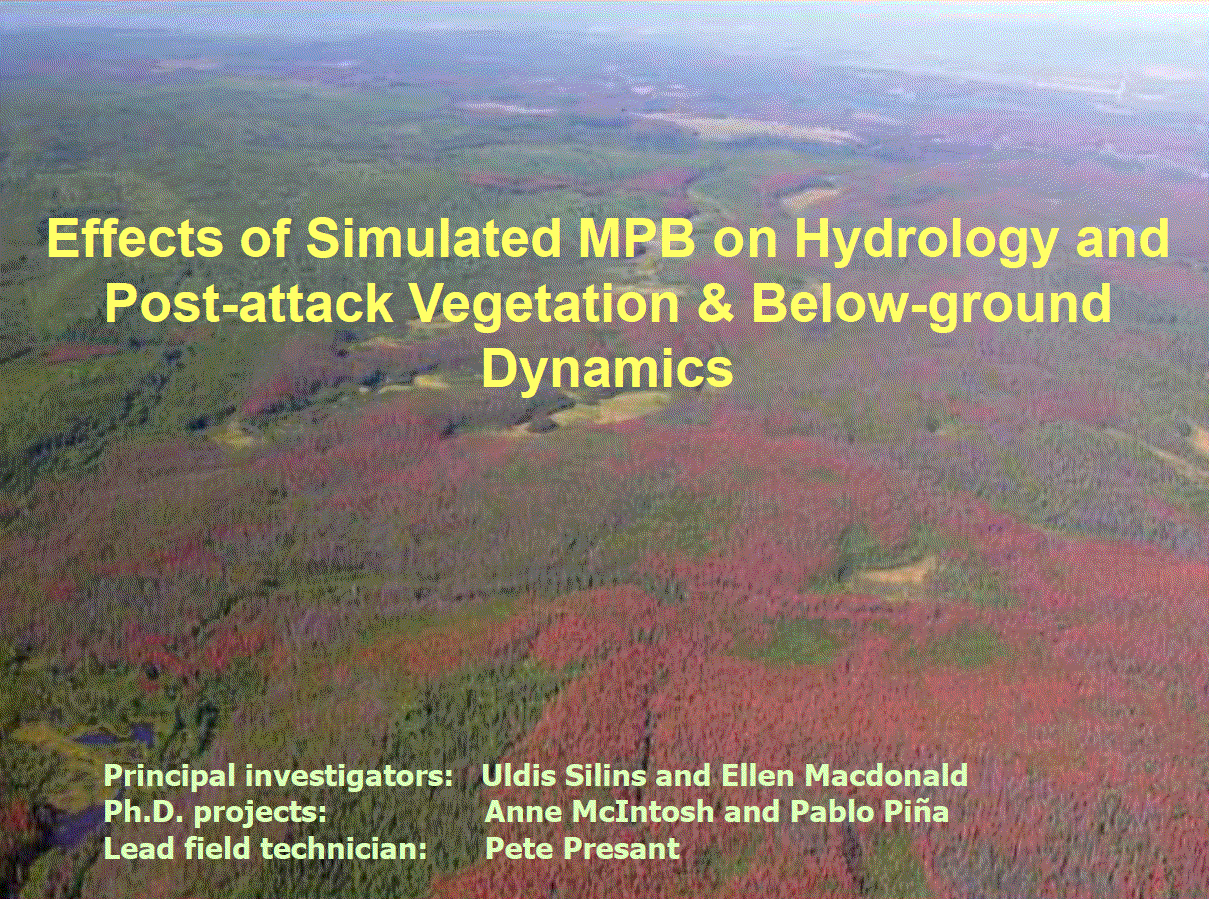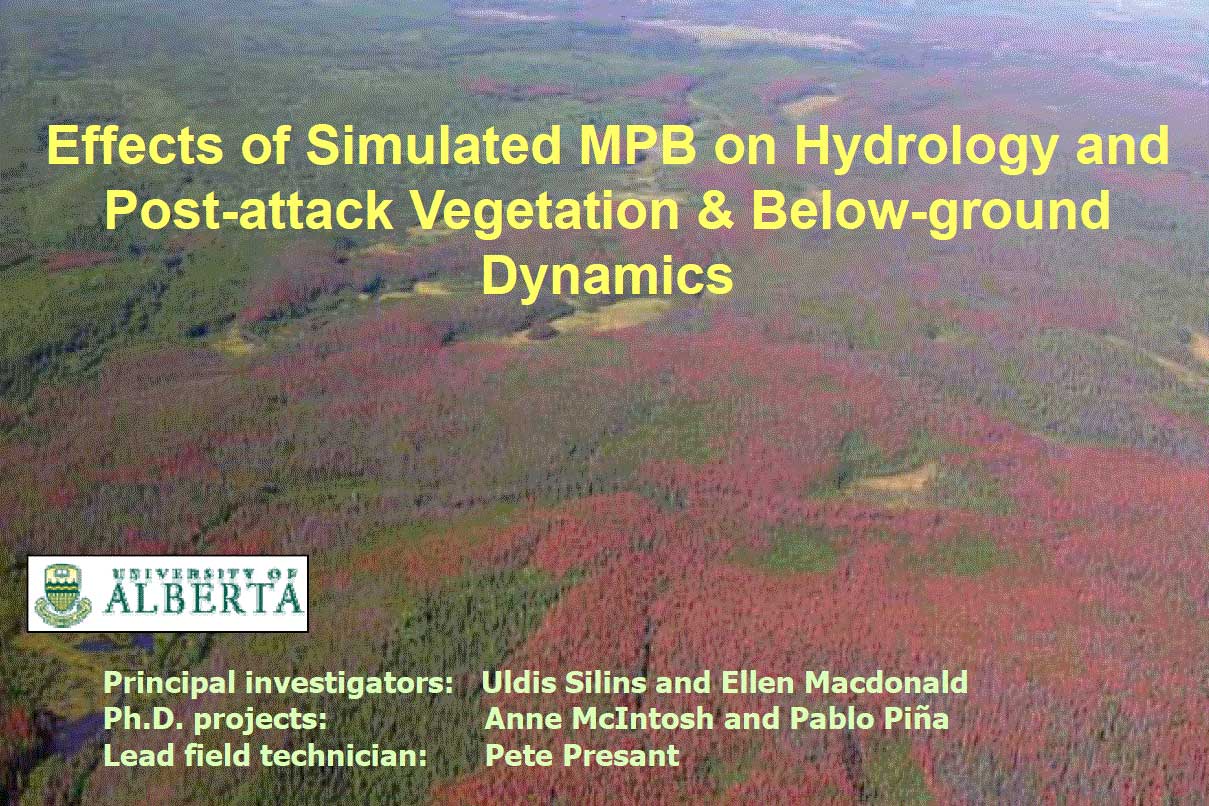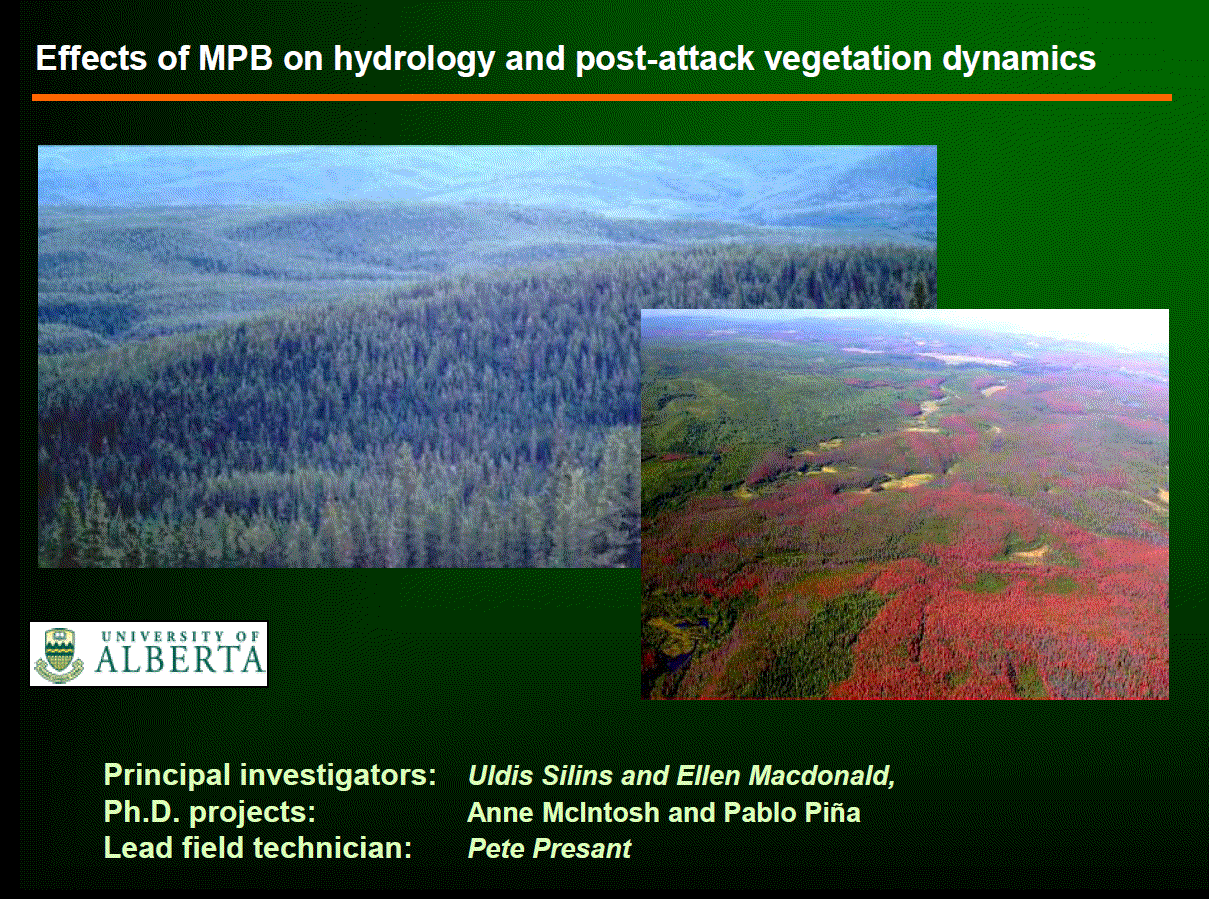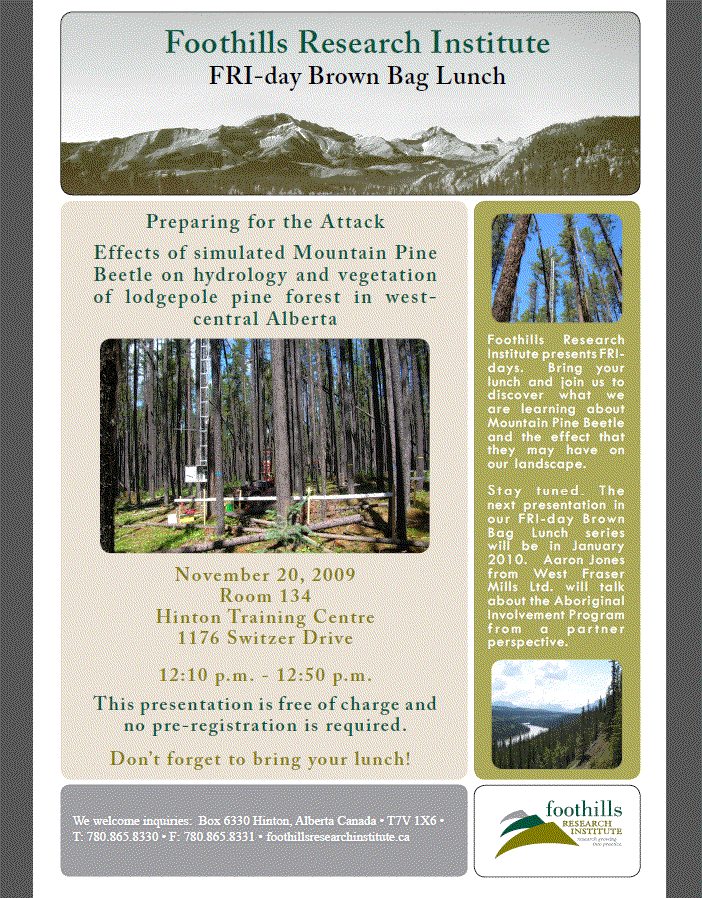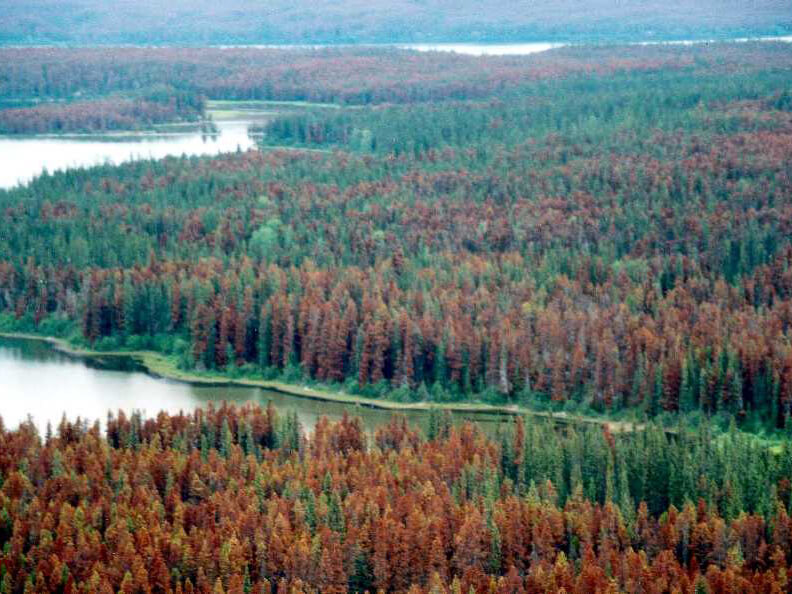
Effects of Mountain Pine Beetle Attack on Hydrology and Post-attack Vegetation and Hydrology Recovery in Lodgepole Pine Forests in Alberta (Phase 1 Red Attack)
Note: in 2014, this project was continued in phase 2: grey attack stands.
This project will describe how mountain pine beetle attack drives changes in hydrology and vegetation. It will provide necessary data for mountain pine beetle decision support tools. This is phase one of the project, examining the effects during the green-red and red attack stages, immediately after mountain pine beetle attack.
Plots were established in 2008, and the hydrology and vegetation were characterized. In 2009, lodgepole pine stands near Robb, Alberta were treated to simulate mountain pine beetle attack. Twelve large replicated stand-scale plots (1.3 to 2.2 hectares) were used to produce two levels of simulated MPB attack (50% & 100%). These stands will be monitored to compared to hydrologic and vegetation responses in small clear cuts, and untreated control stands.
We will monitor weather, vegetation, and water on plots established in 2008 This includes:
- crown condition
- canopy and understory meteorological variables including crown light transmission
- soil moisture
- ground water response
This monitoring will enable a description of how these important environmental conditions will likely drive larger changes in site hydrology and vegetation ecology.
The project kicks off, lead by Uldis Silins
12 large plots near Robb selected and measured.
Chemical girdling is used to simulate 50% and 100% MPB attack mortality.
Hydrological responses measured in the green attack phase.
Hydrological responses measured in the reen-red attack phase.
Hydrological responses measured in the red attack phase.
Stepped-down monitoring as the stand transitions to grey-attack.
Final Report 2012 submitted.
Main body of research complete, planning for phase 2 underway.
Stepped-down monitoring as the stand transitions to grey-attack.










